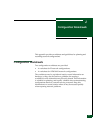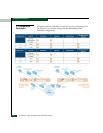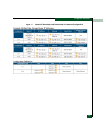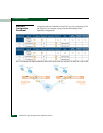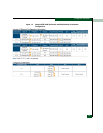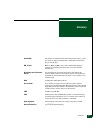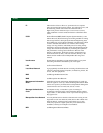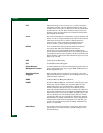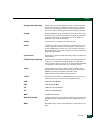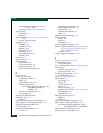
Glossary
g-3
Glossary
FC/IP Fibre Channel over IP (FC/IP, also known as Fibre Channel
tunneling or storage tunneling) is an Internet Protocol (IP)-based
storage networking technology developed by the Internet
Engineering Task Force (IETF). FC/IP mechanisms enable the
transmission of Fibre Channel (FC) information by tunneling data
between storage area network (SAN) facilities over IP networks; this
capacity facilitates data sharing over a geographically distributed
enterprise. One of two main approaches to storage data transmission
over IP networks, FC/IP is among the key technologies expected to
help bring about rapid development of the storage area network
market by increasing the capabilities and performance of storage
data transmission.
FL_port A Fabric Loop port to which a loop attaches, it is the access to the
fabric for NL_ports on a loop.
FPGA Short for Field-Programmable Gate Array, a type of logic chip that
can be programmed. An FPGA is similar to a PLD, but whereas
PLDs are generally limited to hundreds of gates, FPGAs support
thousands of gates. They are especially popular for prototyping
integrated circuit designs. Once the design is set, hardwired chips are
produced for faster performance.
gateway A device that allows communication between dissimilar protocols by
translating information from one protocol to another.
GBIC A fibre channel GigaBit Interface Card
Gigabit Ethernet Gigabit Ethernet is an extension of 10 Mbps (10BASE-T) Ethernet
and 100 Mbps (100BASE-T) Fast Ethernet standards for internet
connectivity. It is fully compatible with the current installed base of
Ethernet and Fast Ethernet nodes. In summary, Gigabit Ethernet is
the same Ethernet that systems administrators already know and use
but is 10 times faster than Fast Ethernet and 100 times faster than
Ethernet.
hub The point on a network where circuits are connected. Hubs are
useful for their centralized management capabilities and for their
ability to isolate nodes from disruptions. Hubs are not switches, as
they have very little intelligence, if any, and they don’t set up
transmission paths.
I/O Input/Output. A reference to interfaces, meaning any connection
providing a path for data into or out of the computer.
interface The hardware that connects the computer to other devices such as
printers, monitors, keyboards, local area networks, telephone lines,
etc.
Internet A network of computers joined together over high-speed backbone
data links ranging from 56 Kbps to T1, T3, OC-1, and OC-3.



